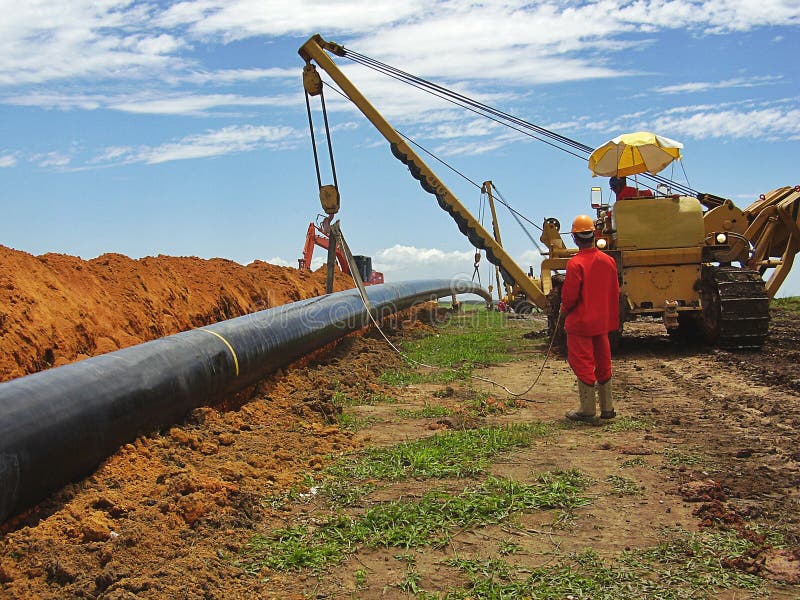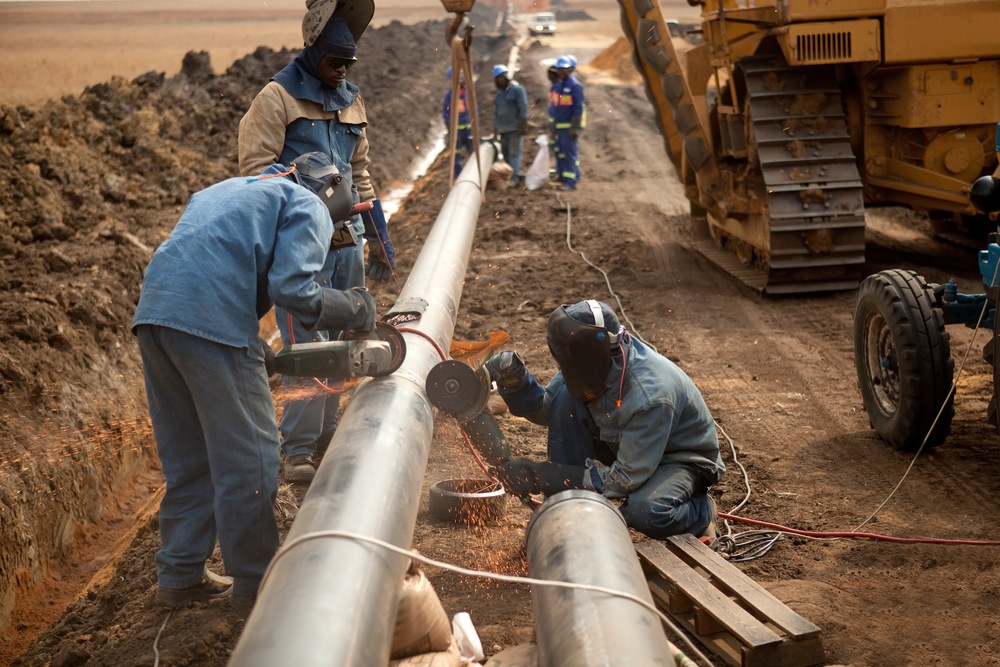How Pipeline Construction Authority Addresses Safety Concerns in Critical Infrastructure
Checking out the Future of Pipeline Construction: Fads and Technologies to See
The pipiline construction industry gets on the edge of significant evolution, driven by technologies in products, automation, and sustainability methods. With the introduction of advanced composite materials and the combination of robot technologies, tasks are coming to be not only a lot more efficient however likewise more secure and eco responsible. Additionally, clever monitoring systems are readied to change maintenance protocols through real-time information analytics. As these fads unravel, the ramifications for regulative compliance and market standards come to be significantly essential. What continues to be to be seen is exactly how these growths will certainly reshape the landscape of pipiline construction in the coming years.
Emerging Products in Pipeline Construction
Current innovations in pipiline construction have highlighted the significance of ingenious materials that improve durability and performance. The industry has progressively transformed to composite products, such as fiberglass enhanced plastic (FRP) and carbon fiber, as a result of their premium strength-to-weight proportions and resistance to corrosion. These products significantly prolong the lifespan of pipelines, decreasing the need for constant upkeep and substitute, which can be both expensive and disruptive.Another exceptional advancement is using high-density polyethylene (HDPE), which has acquired grip for its versatility and resistance to fracturing and environmental stress and anxiety. HDPE pipelines are particularly useful in applications where ground motion positions a danger, as they can hold up against substantial contortion consistently. Additionally, the light-weight nature of HDPE facilitates much easier transportation and installation, further enhancing task efficiency. Pipeline Construction Excellence.Moreover, innovations in nanotechnology have led the way for the creation of materials with boosted homes. Incorporating nanoparticles right into standard polymers or metals can improve strength, reduce weight, and also pass on self-healing abilities, substantially boosting the long life of pipiline systems.Lastly, the combination of wise products, which can reply to ecological adjustments, stands for a frontier in pipiline construction. These materials can keep track of stress and anxiety and deterioration in real-time, enabling for aggressive upkeep and decreasing the possibility of devastating failures
Automation and Robotics in Construction
In an age where effectiveness and accuracy are vital, the combination of automation and robotics in pipiline construction is changing market practices. This technical development is poised to improve productivity while reducing human mistake, thus resolving several of the longstanding obstacles in this sector.Robotic systems are progressively used for jobs such as welding, assessment, and excavation. Permian Basin Pipeline Solutions. These machines can operate in unsafe settings where human visibility might be high-risk, therefore safeguarding employee wellness and security. Furthermore, automated welding robots ensure consistent quality and decrease the probability of defects, which can have considerable monetary implications.Drones are one more important component of this change. They are utilized for airborne surveying and mapping, providing real-time data that can inform project preparation and execution. This ability makes it possible for job supervisors to make enlightened choices quickly, enhancing resource allowance and minimizing delays.Furthermore, making use of automation in pipiline construction permits boosted precision in tasks such as pipe placement and installation. This level of accuracy not only enhances the integrity of the pipiline system yet also lowers the need for pricey rework.As the market remains to accept these modern technologies, the capacity for increased performance and decreased operational costs ends up being obvious. The action in the direction of automation and robotics is not just a trend however a strategic reaction to the evolving demands of pipiline construction, setting a new criterion for future jobs. The ongoing advancement in this area will absolutely form the landscape of construction, driving development and affordable benefit
Smart Keeping Track Of Technologies
The landscape of pipiline construction is increasingly being formed by wise surveillance innovations that improve operational oversight and maintenance effectiveness. These advanced systems make use of a combination of sensors, data analytics, and real-time communication to offer complete understandings right into pipiline conditions, enabling drivers to make informed choices quickly.One of the key components of smart monitoring innovations is the deployment of Web of Things (IoT) sensing units along pipiline networks. These sensors continuously collect information on different criteria, consisting of stress, temperature, and flow prices. By leveraging this information, operators can identify abnormalities that may suggest potential leakages or various other issues, permitting prompt treatments that stop pricey failings and environmental damage.Moreover, the assimilation of maker understanding algorithms into keeping track of systems enables predictive upkeep techniques. By analyzing historic information and acknowledging patterns, these formulas can forecast potential devices failings prior to they take place, considerably lowering downtime and repair prices. Furthermore, cloud-based systems promote the centralized storage and analysis of information, making it obtainable to stakeholders despite location.Furthermore, wise surveillance technologies can improve safety and security procedures by providing real-time notifies to drivers pertaining to dangerous conditions. This aggressive approach not just safeguards personnel yet additionally ensures compliance with governing standards.
Sustainable Practices and Materials
As the pipiline construction industry advances, the consolidation of eco-friendly products has actually emerged as a vital focus for minimizing ecological effect. Innovations in lasting materials not only improve architectural stability however additionally add to lowering the overall carbon impact of pipiline tasks. By focusing on these methods, companies can line up with international sustainability goals while maintaining functional performance.
Eco-Friendly Products Innovations
Technologies in environment-friendly materials are changing pipiline construction, fostering lasting practices that minimize environmental impact. As the sector encounters raising stress to reduce its eco-friendly impact, products such as bio-based plastics, recycled steels, and composite products are getting grip. These alternatives not just supply longevity and strength however also considerably decrease dependence on fossil fuels.Bio-based plastics, stemmed from renewable energies, offer a lasting option for pipiline finishings and linings, boosting resistance to corrosion and chemical damages. Recycled steels, sourced from decommissioned pipelines and other infrastructure, contribute to a round economy by minimizing waste and conserving natural deposits. In addition, progressed composite materials, which incorporate fibers and resins, present a lightweight yet robust option, lowering transport exhausts and helping with easier installation.Additionally, technologies in coatings that use non-toxic, eco-friendly compounds are also boosting the sustainability of pipiline construction. These developments not just protect pipelines from ecological risks however also reduce contamination threats during procedures. By welcoming these environmentally friendly products, the pipiline construction field is taking substantial strides towards a much more sustainable future while resolving the pushing challenges positioned by climate change and source depletion.
Minimizing Carbon Impact
Emphasizing sustainable methods and products is important for pipiline construction to successfully lower its carbon footprint. The market is progressively embracing innovative strategies that prioritize ecological stewardship while keeping functional effectiveness. One significant fad is making use of low-carbon materials, such as recycled steel and bio-based polymers, which not just decrease greenhouse gas discharges throughout manufacturing however also enhance the sturdiness of pipelines.Additionally, progressed construction techniques, including modular construction and prefabrication, simplify the building process, thereby minimizing waste and power consumption. Implementing electronic modern technologies like building details modeling (BIM) permits for even more accurate job planning and source allowance, further mitigating ecological impacts.Moreover, pipiline drivers are exploring renewable resource sources for functional official source power, reducing reliance on fossil fuels. The assimilation of carbon capture and storage space (CCS) technologies is also getting grip, supplying a method to offset exhausts related to pipiline operations.Ultimately, the commitment to lasting techniques in pipiline construction not only addresses governing demands you can find out more yet also responds to growing public need for environmentally accountable infrastructure. By taking on these practices, the industry can blaze a trail towards a more sustainable future while guaranteeing the honesty and effectiveness of pipiline systems.
Digital and Simulation
While the construction sector has actually typically depended on physical models and hands-on procedures, the appearance of electronic twins and simulation innovations has actually reinvented job planning and execution. Digital doubles are virtual replicas of physical possessions that incorporate real-time information, enabling stakeholders to picture and manage pipiline jobs more efficiently. By producing a detailed digital design, task groups can assess performance, predict outcomes, and make educated decisions throughout the construction lifecycle.Simulation innovations even more improve this procedure by enabling teams to check various situations and assess their prospective impacts prior to execution. This capability is especially essential in pipiline construction, where ecological conditions, regulative demands, and logistical challenges can considerably affect project timelines and costs. By mimicing different situations, engineers can identify excellent construction methods, resource allocations, and routines, eventually decreasing dangers and improving efficiency.Additionally, electronic twins promote boosted cooperation among task stakeholders. As details is continuously updated in real-time, all included events have accessibility to the same information, fostering openness and making sure alignment on project objectives. This seamless assimilation of info can result in quicker decision-making and even more dexterous reactions to unanticipated obstacles.
Enhanced Precaution

Governing Changes and Conformity
Regulative adjustments and compliance are vital components shaping the landscape of pipiline construction. As environmental issues and public safety continue to get importance, regulatory bodies are significantly implementing stringent guidelines that control every facet of pipiline tasks (Pipeline Construction Authority). These laws encompass a large range of factors, including exhausts standards, land usage, and waterway security, demanding that firms remain watchful and adaptable.In recent years, we have actually observed a considerable change toward extra durable compliance frameworks. Agencies such as the Pipeline and Hazardous Products Safety Management (PHMSA) in the USA have presented go to this website detailed policies focused on lessening risks connected with pipiline procedures. This includes requireds for innovative monitoring modern technologies and routine examinations to guarantee adherence to safety standards. Subsequently, companies must buy training and sources to fulfill these developing requirements.The worldwide landscape is not static; global arrangements and regional guidelines likewise play a role in shaping compliance methods. Firms took part in cross-border tasks have to navigate a complicated web of lawful commitments that vary from region to area, typically bring about raised functional prices and task delays.Furthermore, the fad towards increased transparency and public engagement is improving exactly how firms approach pipiline construction. Stakeholder input is currently extra important than ever, needing firms to be aggressive in addressing area problems connected to environmental influence and security
Regularly Asked Concerns
What Are the Main Challenges Dealing With Pipeline Construction Today?

How Does Environment Change Effect Pipeline Construction Practices?
Climate modification significantly influences pipiline construction methods by requiring enhanced ecological assessments, increased governing compliance, and the fostering of resistant framework designs (Midland Pipeline Construction Authority). These adaptations aim to minimize dangers related to severe climate events and moving ecological problems

What Duties Do Stakeholders Play in Pipeline Job Growth?
Stakeholders in pipiline project development include governmental agencies, environmental organizations, local communities, and investors. Their functions encompass regulative compliance, ecological assessments, neighborhood engagement, and financial support, ensuring projects straighten with societal needs and sustainability objectives.
Exactly How Is Public Perception Influencing Pipeline Construction Projects?

Public perception substantially influences pipiline construction tasks, as neighborhood problems concerning environmental influence, safety, and economic benefits can cause boosted examination, regulative obstacles, and project delays, eventually forming the decision-making processes of stakeholders included.
What Is the Future Task Market Outlook for Pipeline Construction Professionals?
The future task market for pipiline construction experts appears encouraging, driven by enhancing facilities financial investments and technical advancements. Need for proficient labor is expected to increase, stressing the demand for training in emerging construction methods and security procedures.